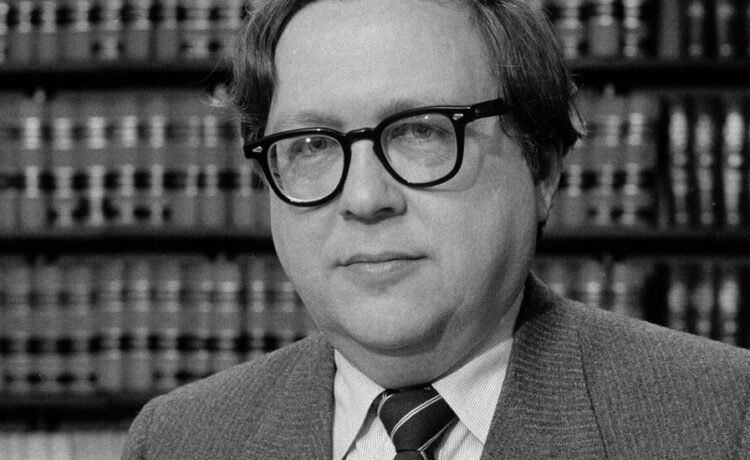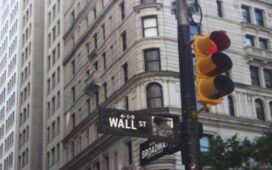Raymond L. Dirks, a maverick Wall Street analyst who was accused of insider trading by securities regulators but then vindicated by the U.S. Supreme Court as a whistle-blower in a major fraud, died on Dec. 9 in Manhattan. He was 89.
His death, in a nursing home, where he had lived since being diagnosed with dementia in 2018, was confirmed by his brother, Lee.
Mr. Dirks, whom Bloomberg News once branded as “arguably Wall Street’s most famous securities analyst,” figured in exposing one of the largest corporate frauds in American history.
He was a 39-year-old senior vice president of Delafield Childs, a New York research-oriented brokerage firm, when, in 1973, he received a tip from a former executive of Equity Funding Corporation of America that the firm had sold bogus policies to reinsurance companies, transactions that inflated its assets and earnings.
After conducting his own research into Equity, a Los Angeles-based company, Mr. Dirks told a Wall Street Journal reporter about the fraud and advised his clients who were institutional investors in Equity to dump their holdings.
Equity Funding collapsed, and several of its officers were prosecuted and imprisoned.
While Mr. Dirks was hailed as a folk hero in some quarters — The New York Times called him “flamboyant, fidgety and persistent”— the S.E.C. eventually censured him for insider trading and violating anti-fraud provisions of the law by taking advantage of inside information and sharing it with investors. The investors sold their Equity shares before the information became public.
The threat of suspension by the commission and other potential penalties, coupled with the $1.5 million (in today’s dollars) that Mr. Dirks said he spent on legal fees from 1973 through 1983 as he challenged the S.E.C. in the federal court system, severely affected his earnings, his brother said.
That 10-year odyssey ended in 1983, when the Supreme Court overturned the S.E.C. censure, rejecting the agency’s interpretation of insider trading. (The interpretation had also been challenged by the Justice Department in a strongly worded brief.)
Writing for a 6-3 majority, Associate Justice Lewis F. Powell Jr. said that the commission’s broad definition of what constituted insider trading “threatens to impair private initiative in uncovering violation of the law.”
Liability, the court ruled, depended on whether the original source of the tip, or “tipper,” had breached his legal duty to the corporation’s shareholders in passing along the information. In this case, Justice Powell concluded, the tipper was motivated by a desire to expose the fraud, and “there was no derivative breach” by Mr. Dirks, who had not profited personally from selling the company’s stock.
While the court sided with Mr. Dirks, its decision invited criticism from securities industry regulators and some investors, who warned that it would undermine public faith in stock trading and make it more difficult to prosecute cases of insider training.
“While the S.E.C. will still be able to bring the ‘hardcore’ cases,” Stanley Sporkin, the commission’s former director of enforcement, wrote in 1983, “its efforts in curtailing tipping and enhancing the integrity of the marketplace have been considerably weakened.”
Raymond Louis Dirks Jr. was born on March 1, 1934, in Fort Wayne, Ind. His father, Raymond Sr., was an Army artillery officer who moved his family frequently as he was assigned from base to base. He was later a salesman for a manufacturer of industrial-strength chains. Raymond’s mother, Virginia Belle (Wagner) Dirks, was a homemaker.
After graduating from Needham High School in Needham, Mass., Mr. Dirks earned a bachelor’s degree in history from DePauw University in Indiana in 1955. In 1956, he was summoned for military duty by the draft board in Wellesley, Mass., but successfully resisted — despite the entreaties of his Army veteran father and his brother, who was in the Air Force at the time — on the grounds that he was a pacifist.
In 1955, Mr. Dirks joined the estates and trusts division of Bankers Trust in New York, then jumped to other firms as an insurance stock analyst. He and Lee Dirks (who specialized in newspaper stocks) established Dirks Brothers analysts in 1969, serving institutional clients. It later merged with Delafield Childs.
He left Delafield after the Equity fraud episode and eventually joined John Muir & Co., where he rose to general partner.
But in 1981, regulators ordered Muir to be liquidated because it lacked sufficient capital after underwriting stock offerings in highly speculative companies and hosting extravagant parties for clients. One of the underwriting ventures involved the Cayman Islands Reinsurance Corporation.
Six months later, the S.E.C. charged that Mr. Dirks had failed to disclose in a prospectus for that venture that one-third of the proceeds from the sale of a new stock issue by the Cayman Islands company would be invested in other stocks backed by Muir.
A federal judge ruled that Mr. Dirks had violated federal securities laws and had to forfeit his proceeds from the venture. But the judge declined to bar Mr. Dirks from the securities business.
Mr. Dirks’s first marriage, in 1959, ended in divorce after two years. In 1979, he married Jessy Wolfe, who died in 2015. In addition to his brother, he is survived by a daughter, Suzanne Dirks.
Mr. Dirks wasn’t necessarily destined to wind up on Wall Street, but he had been a whiz with numbers since boyhood.
When he was 12 he devised a complex formula to predict the outcome of football games, and, his brother recalled, “he outperformed football prognosticators who were syndicated columnists.”
Working at a car rental agency during a summer vacation from college, Ray analyzed stock tables, applying his statistical skills to predict the trajectories of individual companies.
At 19, he began investing the $800 he had saved as a carrier boy for The Indianapolis News. His father was horrified. As a recent graduate of Purdue University, Raymond Sr. had bought a few shares of AT&T in 1928, lost his investment in the stock market crash of 1929 and never played the market again.
His son bought 10 shares of Indiana Standard for $780; an hour later, the stock split two for one and rose several points.
“I thought I was a genius,” Mr. Dirks told The Times in 1983.
He invested his profit in Gulf, Mobile and Ohio Railroad, and after the stock registered another solid gain within weeks, he sold it.
“By this time,” he said, “I was convinced I was a genius.”
By 1973, after nearly two decades of investing, Mr. Dirks had accrued more capital than he had frittered away. All he would say, though, was: “I’m doing much better than average. I’m not losing as much as everybody else.”
Ten years later, he predicted that the Supreme Court’s decision would improve the standing — and remuneration — of stock analysts like himself.
“As a result of the Dirks case, perhaps analysts will no longer be viewed as gnomes with graphs and charts full of stale numbers and wavy curves,” Mr. Dirks wrote in the Business section of The Times. “Perhaps now the analyst will be seen for what he really is — the investigative reporter of the marketplace, an essential conduit of information to the investment community.”


